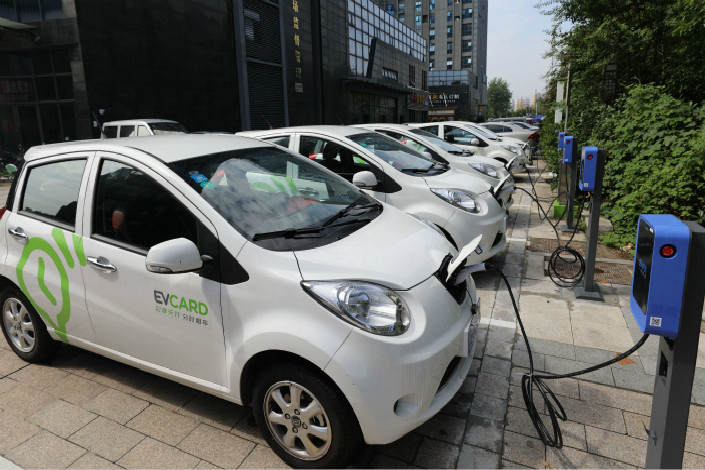China to End Sales of Fossil-Fuel-Powered Cars

China is joining the U.K. and France with plans to end sales of fossil fuel-powered vehicles, as it works to develop new policies to promote new energy vehicles with the scheduled end of existing incentives in 2020.
“China has begun research on formulating a timetable to stop production and sales of traditional energy vehicles,” Xin Guobin, deputy minister of the Ministry of Industry and Information Technology (MIIT) said at an auto industry forum over the weekend.
The MIIT had not yet decided when the ban would come into force. China’s market is currently dominated by fossil-fuel-powered vehicles, with only a tiny portion of sales coming from new energy cars. Beijing has tried to encourage development of cleaner energy cars through various government incentives, including subsidies, but has found limited success so far.
As part of a drive to clean up the nation’s polluted air and meet its carbon emissions target, the subsidy program, begun in 2010, has seen billions of government dollars spent to support research and incentives for buyers. But the program has led to widespread cheating as many companies exaggerated their efforts in order to get subsidies.
Chinese regulators overhauled the incentive system late last year following an eight-month nationwide investigation to get tough on the cheaters. But even the new plan is set to be retired in 2020.
The government has said that the ending of the subsidy program doesn’t signal an easing of Beijing’s determination to promote new-energy vehicles. Accordingly, it will make long-term and systematic plans to offset the negative influence of retiring subsidies, said Wu Wei, an official from the National Development and Reform Commission, China’s state planner, at the weekend forum.
Instead of providing subsidies, the government is preparing to roll out a quota system to continue promoting new energy vehicles. That means the burden of selling new energy cars will borne by automakers, which must ensure a certain ratio of their sales are for low- and no-emissions vehicles.
The plan, which was announced in 2016, sets quotas of 8%, 10% and 12%, respectively, for all carmakers in the three years starting from 2018. Those numbers are related to points awarded for each vehicle sale, and roughly correspond to the percentage of a company’s cars sales that must be electric or hybrid, a group generally referred to as new energy.
Automakers that fall short of the target could buy credits from competitors that have a surplus. But a source recently told Caixin the start of the quota program could be pushed back to 2019, following complaints from automakers that they didn’t have enough time to prepare.
Mats Harborn, president of the European Union Chamber of Commerce in China, welcomed the end of state subsidies. “When you look at the product range that they are presenting … it seems these products would be quite affordable even without subsidies,” he said. “That will show the market force will accomplish what the government wants to see.”
To prepare themselves for the new rules, most Western automakers have been scrambling to set up joint ventures with major Chinese new energy carmakers over the last several months. Last month, the French-Japanese Renault-Nissan Alliance announced a new energy car joint venture with Dongfeng Motor Group Co. Ltd.
Contact reporter Mo Yelin (yelinmo@caixin.com)

- 1China Sets 2026 Economic Priorities With Demand Revival at the Core
- 2In Depth: China Bad-Debt Managers’ Bet on Bank Stocks Could Backfire
- 3Beijing Moves to Rein in Steel Exports With New Licensing Rule
- 4China Ramps Up Effort to Offload Vast Supply of Unsold Homes
- 5China’s Elite-Focused Schools Are Failing Most Students, Top Educators Say
- 1Power To The People: Pintec Serves A Booming Consumer Class
- 2Largest hotel group in Europe accepts UnionPay
- 3UnionPay mobile QuickPass debuts in Hong Kong
- 4UnionPay International launches premium catering privilege U Dining Collection
- 5UnionPay International’s U Plan has covered over 1600 stores overseas





